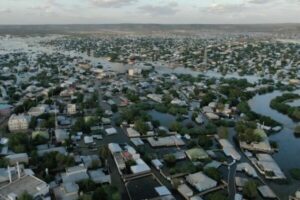

 The Horn of Africa is one of the regions most vulnerable to climate change, and extreme weather events are becoming increasingly frequent and intense. More than 45,000 people have been affected by flash floods in Somalia since mid-April, the United Nations said, with at least four people killed in the rapidly rising waters.
The Horn of Africa is one of the regions most vulnerable to climate change, and extreme weather events are becoming increasingly frequent and intense. More than 45,000 people have been affected by flash floods in Somalia since mid-April, the United Nations said, with at least four people killed in the rapidly rising waters.
“Since 15 April, flash floods due to heavy to moderate rains in Somalia have affected over 45,000 people and swept away four people, including two children and a woman,” said UN humanitarian agency OCHA, in a report published on 30 April.
UNOCHA (United Nations Office for the Coordination of Humanitarian Affairs) warned that the flooding came at a time when NGOs, often the frontline responders, are facing crippling funding reductions that have severely limited their ability to respond to emerging needs.
It detailed that roughly 6,000 people were displaced in the Middle Shabelle region after the Shabelle River burst its banks on 29 April. Families have sought refuge in makeshift camps on higher ground, it said, but are facing acute shortages of food, clean water, and healthcare.
UNOCHA also mentioned that homes have been swept away, including crops and livelihoods, across several regions of Somalia. The day before, some 9,500 people were also displaced in central Galmudug State after light to moderate rains caused flash floods, it said.
The floods come as the international humanitarian community grapples with the United States’ decision to dismantle much of USAID, the country’s main foreign development arm. Somalia was hit by intense floods in 2023. More than 100 people were killed, and over a million were displaced after severe flooding caused by torrential rains linked to the El Niño weather pattern.
Ermias Tilahun,
Sources: AP, NewArab News, AlJazeera




